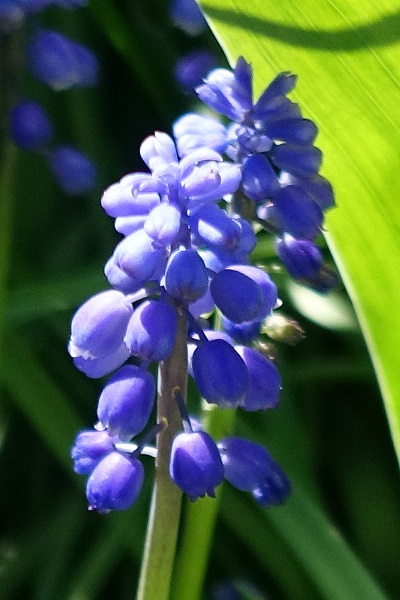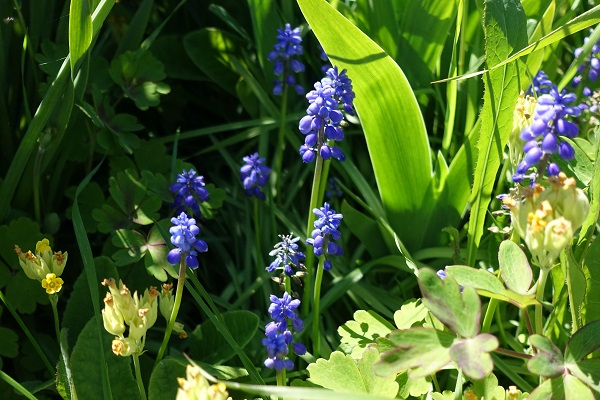|
|
| Life form: |
| Bulbous perennial herb |
| Stems: |
| Height 7-25cm, leafless stalk |
| Leaves: |
| Basal rosette, 2–3 leaves, rigid, erect; blade linear–spatulate, keel-tipped, flat, parallel-veined, entire margin. |
| Flowers: |
| Perianth subglobose to urcreolate, blue-purple, glabrous, of united parts, to 6mm long, with 6 small lobes at apex. Lobes white, 1mm long. Stamens 6, adnate to base of perianth, included. Style 1, included. Stigma 3-lobed. Ovary superior, 3-locular |
| Flowering Period: |
| May |
| Fruits: |
| Capsules 3-angled, glabrous, glaucous, 5mm long and broad. Seeds 2 per locule, black |
| Habitat: |
| Yards, parks, gardens, pastures, old homesites, roadsides, railroads, wasteland, dumps, broadleaf woods |
| Distribution: |
| Southern Sweden |

Derivation of the botanical name:
Muscari, grape-hyacint; Greek moschus, musk; an allusion to the sweet scent of some species. Umberto Quattrocchi says: A Turkish name recorded by Clusius in 1583. Latin muscus, i "moss, musk."
botryoides, Greek botrys grape and Latin -oides like; like a bunch of grapes.
- The standard author abbreviation L. is used to indicate Carl Linnaeus (1707 – 1778), a Swedish botanist, physician, and zoologist, the father of modern taxonomy.
|


